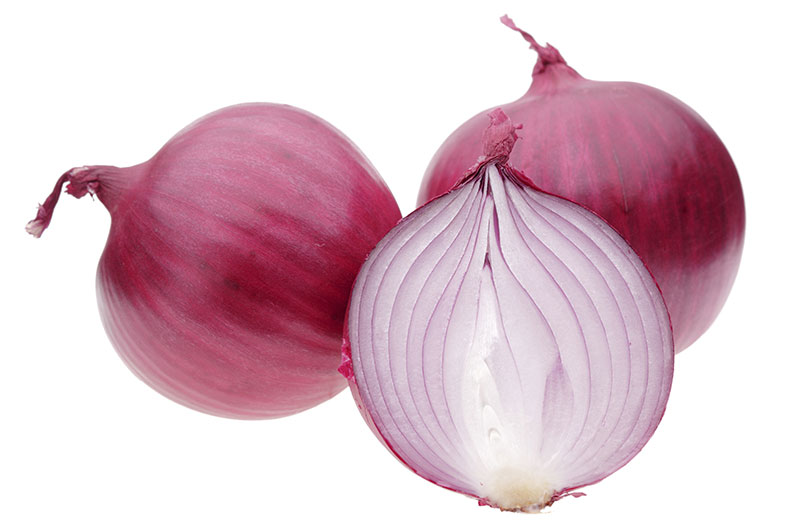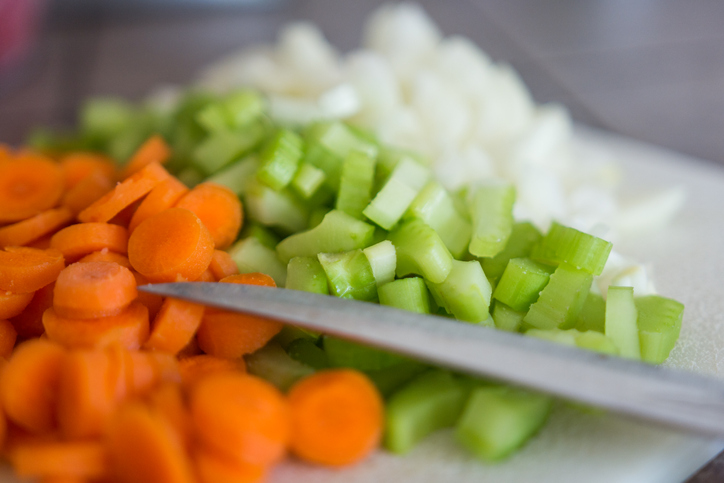Onions, Red

Availability:
Year-round
Availability:
| J | F | M | A | M | J | J | A | S | O | N | D |
Notice:
on demand
Receiving/Storage:
Receiving Information: Good quality dry onions should be firm and hard with short, tight necks and dry papery skins. Slightly loose outer skin is common and should not affect quality. Avoid onions that show mold, decay, or blemishes. Sprouting; decay; mold: Dry onions may show signs of sprouting, decay, or mold if they are stored at high temperatures or high humidity. To maintain quality, keep short-term storage temperature of 60-65 degrees F/16-18 degrees C and a humidity level of 85-95%. Be sure onions are stored in a well-ventilated area. For extended storage (longer than 7 days), hold onions at 32-36 degrees F/0-2 degrees C and 60-65% relative humidity. Water-soaked spots: This is an indication of freeze damage. To prevent freezing injury, do not store dry onions below 30 degrees F/-1degree C. Green spots: Dry onions may develop green spots if they are exposed to sunlight. For best quality, keep onions in a dark area out of sunlight. Bruising: Rough handling may cause bruising, especially with spring/summer onions. To prevent bruising, keep handling to a minimum; do not drop shipping containers on the floor. Storage/Handling: Temperature/humidity recommendation for short-term storage of 7 days or less: 60-65 degrees F. 85-95% relative humidity.
For extended storage, hold dry onions at 32-36 degrees F/0-2 degrees C. Maintain good air ventilation during storage; keep onions out of direct sunlight. Store dry onions away from foods that absorb odors.
Handling tips: Handle onions with care to prevent bruising or decay. Spring/summer onions are especially susceptible to bruising due to high water and sugar content.
Description:
Red Onions are a favorite for adding color and flavor when used raw. They don’t have the same intense bite as a white or yellow onion, their slightly milder taste is best suited for raw applications such as salads, sandwiches or hamburgers. They are also great for pickling or saut_ing. Onions (dry) are typically divided into two categories: Storage _ Generally available August _ March. Characterized by multiple layers of thick, dark skin, intense flavor, and higher percentage of solids. Storage onions may be red, white, or yellow in color. Spring/Summer _ Generally available April _ August. Characterized by thin, light-colored skin and a sweet, mild flavor due to a higher water and sugar content. Because of their thin skins, spring/summer onions are more susceptible to bruising. Spring/summer onions may be red, white, or yellow in color.


